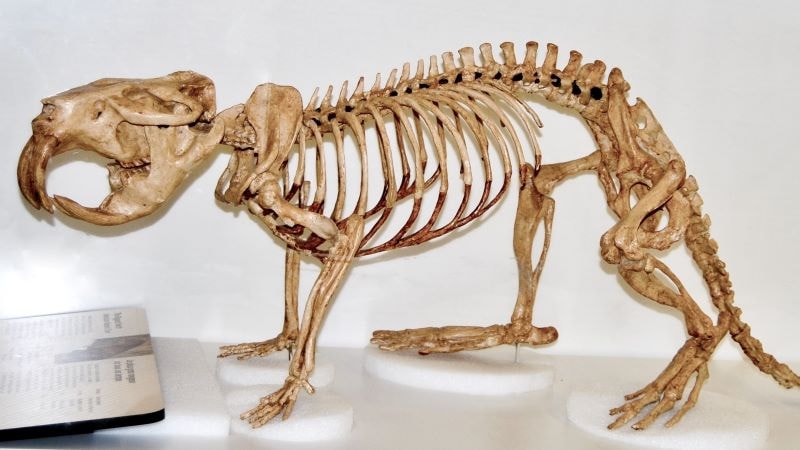Published:

A Heriot-Watt postgraduate student has discovered something surprising about the diet of an extinct animal that could explain why it died out.
Tessa Plint conducted research during her Masters degree at Western University about the diet and behaviour of the Ice Age giant beaver. This mega-rodent could reach up to 7 feet long and weighed 100 kilograms, and was once widespread across North America.
The study saw PhD student Tessa Plint and colleagues use stable isotope ratios – or chemical tracers – from ancient bones and teeth to better understand the palaeoecology of this extinct giant rodent.
Tessa Plint explains: “Basically, the isotopic signature of the food you eat becomes incorporated into your tissues. Because the isotopic ratios remain stable even after the death of the organism, we can look at the isotopic signature of fossil material and extract information about what that animal was eating, even if that animal lived and died tens of thousands of years ago.
“This information about the extinct giant beaver diet is particularly important as it can tell us about what kind of habitat it preferred, what kind of impact it had on the landscape, and what made the species vulnerable in an ecological sense.”
Their findings show that, unlike their modern day relatives, giant beavers were not cutting down or eating trees. Instead, they lived off aquatic plants.
This dependence on wetland habitat for both food and shelter likely made them vulnerable as the climate became increasing warm and dry in North America towards the end of the last Ice Age, drying up the wetland habitats that giant beavers relied on.
Tessa Plint said: “Giant beavers were not 'ecosystem-engineers' the way that the North American beaver is.
“After the Last Glacial Maximum (around 10,000 years ago), the ice sheets retreated and the climate became drier. The ability to build dams and lodges may have actually given the modern beaver a competitive advantage over the giant beaver, because it could alter the landscape to create suitable wetland habitat where required. The giant beaver couldn't do this.”
The full study is published in Scientific Reports and can be found here.